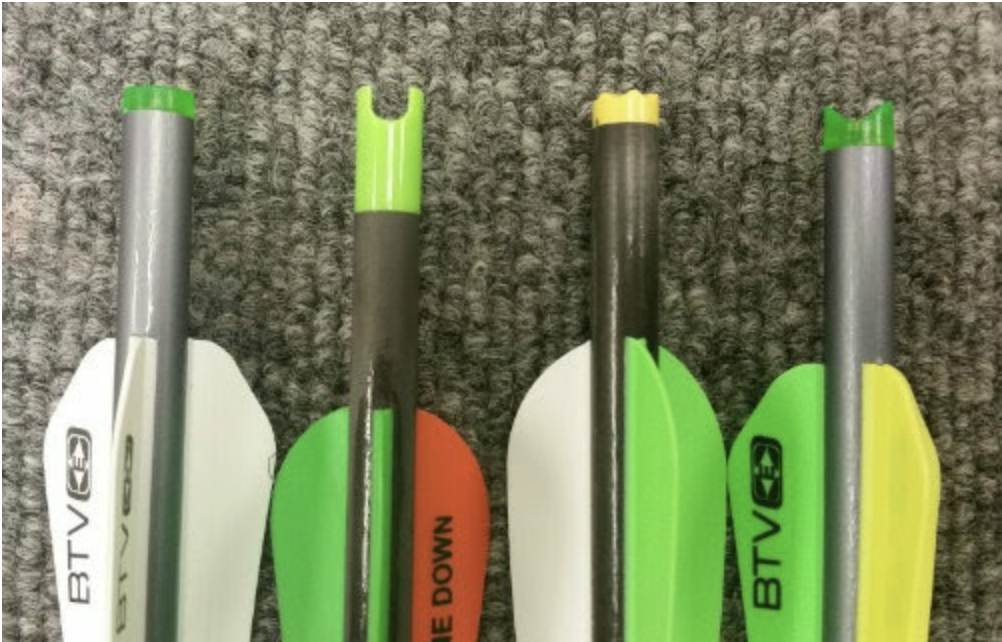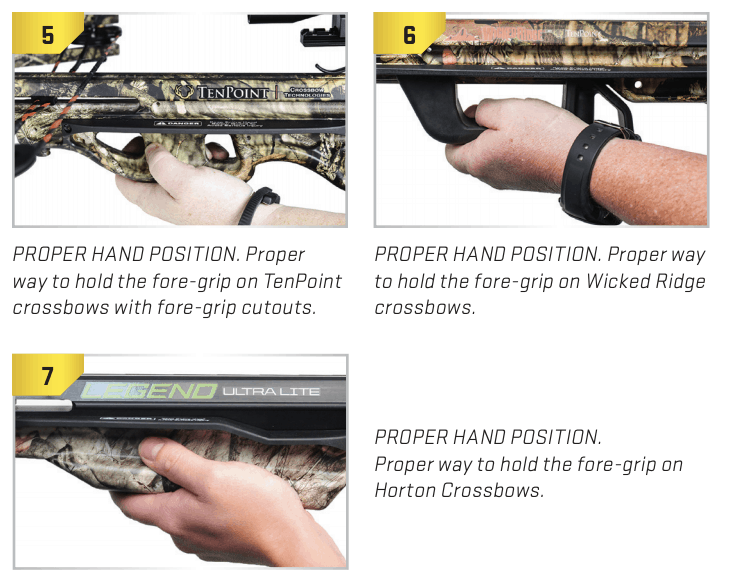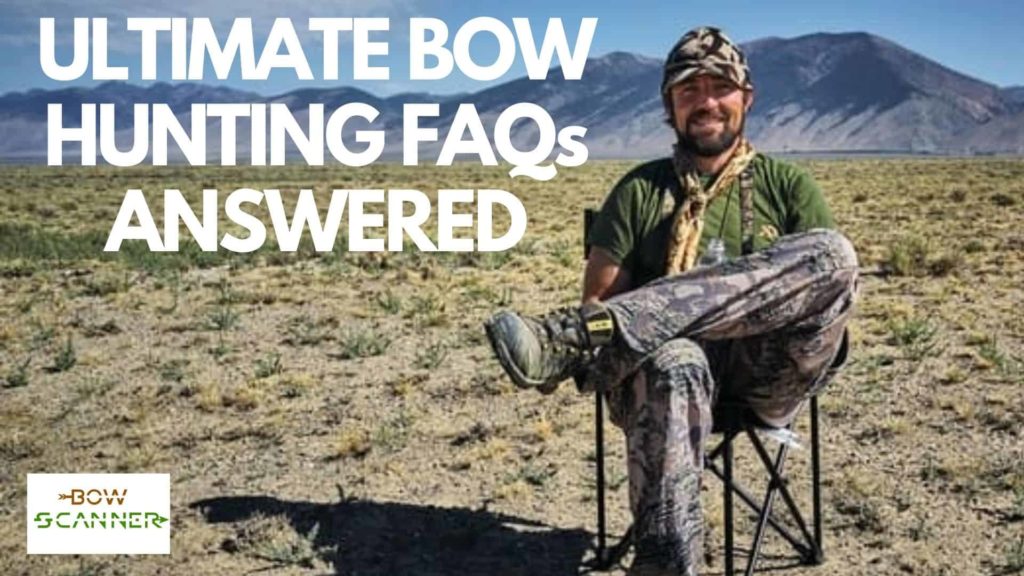Your crossbow questions answered
Crossbows are complex weapons. We want to be able to shoot them at optimal speed and accuracy, and at times, questions arise. When they do, we want to be the first site you think of to find your answers.
Our hope is that we will comprise a list of all the most frequently asked questions for our fellow bow hunters.
If there’s a question that we haven’t answered yet, post it in the comment section at the bottom of the page. We’ll make sure to get to it as soon as we can.
Cheers hunters!
BowScanner
Why do I have to wind the crank back three times after cocking a crossbow with ACUslide?
If you don’t ease the tension, your arrows’ accuracy will be compromised. This will affect down-range and long-distance accuracy.
Therefore, we wind the crank back after cocking the bow to relieve the tension from the cocking strap.
What does it mean for a crossbow to be presighted?
Purchasing a pre-sighted crossbow means that the crossbow’s scope has already been sighted. This means that the workers at the factory have done the work for you, so that the expectation is that you can take the bow out of the package, go directly to the target and shoot within six inches of your target at a 20 yard distance.
Do I need to shoot with broadheads to test the accuracy after I've sighted in?
Yes! Always test-fire your crossbow using broadheads to make sure the grouping accuracy is zero’d in where you’d like it.
We do this because the broadhead’s shape is different than the field point’s shape and there is a possibility for producing different results.
What's the best type of target for my crossbow?
Having the proper target for your crossbow and for your needs is crucial.
Different model crossbows shot at different speeds and it is critical that you find a target that will stop the arrows shot by your bow.
Also, there are different targets for shooting field points vs. broadheads.
Check out our review to get a complete list and breakdown for the best crossbow targets.
There are 3D targets that are designed specifically for bow hunters. These make good practice for hunting.
Lastly, if you’re looking to make an at-home target, check out this Best DIY Archery Backstop.
How far can I shoot my crossbow?
Depending on which scope you’re shooting with, crossbows can accurately shoot up to 100 yards.
The ethical hunter understands, however, that crossbows do not shoot like rifles and should only be used to kill game from 50 yards or closer.
How do I safely decock my crossbow?
If your crossbow came with or you purchased a device to help you decock your crossbow by unwinding the crossbow, it will be a safe and easy process.
If your crossbow does not come with a decocking device, the safest way to decock is to shoot it at a tree or discharge bag.
Here are two of our favorite decocking devices for your crossbow. Make sure they fit your specific bow.
What do I do if my crossbow was left in the rain?
Use paper towels or cloth towels to soak your crossbow up as soon as you can.
Then, use cotton balls to get in the hard to reach places.
What I like to do next is use a leaf blower and really get the bow dry.
To avoid rust, use WD-40 and then apply trigger lube inside the string slot.
How can I best take care of my crossbow?
Crossbows are able to last for nearly a decade if taken care of properly.
First, always use a crossbow case when you’re not using it.
Next, always make sure you use this string lube before you go out shooting. This helps maintain a healthy strength and flexibility to your string. This is not only safe for you, but also helps maintain the life of the bow.
When you’re finished shooting, use a rag to wipe away any excess lube or string or other material that may be attached to the bow.
Avoid excess water on the bow. You can of course shoot in the rain, but try to keep the bow as dry as you can.
How often should I change the strings on the crossbow?
If you’re maintaining the string well using lube, we recommend changing the string every two years.
How do I choose the best bolts for my crossbow?
Choosing the best bolts for your crossbow involves checking the speed at which your bow shoots. This matters because you’ll want to find the best bolt weight to shoot for your bow.
Also, you’ll need to consider which nock is best for your style of shooting.
There are four styles of nocks, which include flat, half moon, half moon hybrid, and then there’s lighted nocks, which are pretty sweet.
Different bolts also come from different materials, which affect the speed and length of life of the bolt. Carbon bolts are awesome, but go ahead and check the Best Crossbow Bolts page to find what’s right for you.
Is hunting from a treestand safe?
Hunting from a treestand is an amazing experience. It feels primal being up in the tree, and there’s really nothing like it.
Any veteran tree stand hunters will tell you that safety is very important.
We recommend practicing before the day you’re going out for the hunt. That being said, hunters have been using treestands for a long time. As long as you follow the directions printed on the stand that you purchase, treestand hunting is highly recommended!
Selecting the best hunting treestand is critical to safey. There are a lot of factors, such as weight and mobility that play an important role in selecting the best stand for you.
We highly recommend reading this article.
In case you’re looking for a more minimal approach, which there are times that it’s just easier and more free feeling, read all about hang on tree stands.
Yet, if you’re still not convinced that you’ll be getting into the tree, the best alternative are the tripod hunting stands.
Which Nock to use with your crossbow?
Each crossbow model will specify which nock is best for your particular crossbow.
However, it is good to know the difference between the kinds, so you can get a better feel for which you might like the most.
As y0u can see from the picture to the right, there are four different kinds of nocks. These include, flat, half-moon, half-moon hybrid and lighted.

How to safely position your hands when shooting

As you can see from the images on the left, in order to safely shoot a crossbow, the most important aspect is to place your hands and fingers below the rail.
This style eliminates the chance that your finger will be cut when shooting.
How to test for trigger safety?
Always follow these steps to test for trigger safety:
- Pull the trigger only to fire the crossbow.
- Never pull the trigger unless you intend to fire the crossbow.
- Manipulating the trigger is a bad practice.
- Never partially pull the trigger. If you partially pull the trigger, reset the safety by recocking the bow and checking for safety bounce back.
- Visually verify your safety is in the white or “safe” position when you engage or reengage your safety. Check for bounce back.
How to safely cock your crossbow
Cocking your crossbow inaccurately is the surest way to shoot inaccurately. With any crossbow, if the bowstring is not centered on the string-latch when cocked, the crossbow will not shoot straight. Follow these steps to ensure accuracy
- With the underside of the crossbow facing your legs, place your foot far enough into the foot stirrup to keep it from slipping out when you draw the bowstring.
- Bend over the crossbow, grabbing the bowstring on both sides of the barrel using all four fingers of both hands.
- Slide your hands flush against the sides of the barrel.
- With your index fingers against the side of the barrel to guide you, and with a secure grip, start pulling the bowstring toward the string slot in the trigger box. While you begin to lift, simultaneously transfer as much of the lifting effort as you can away from your back and onto your legs. As you pull the bowstring inside the string slot, you can see and hear the safety slide click from FIRE (red) -to- SAFE (white) and also hear the string latch click as it engages the bowstring.
- Check to make sure the string latch – and not the DFI – is holding the bowstring. Remember, the bow will not fire if the bowstring is being held by the DFI. Also check to make sure the safety knob is in the SAFE (white) position before proceeding to load an arrow

How to properly mount a scope to my crossbow?
Here is our favorite video on how to properly mount a scope to your crossbow:
How do I correct my bow string after accidentally shooting it into my Dry-Fire Inhibitor?
In order to re-cock your bow and free the string from the DFI (Dry-Fire Inhibitor), you will need to reset the string onto the string latch.
There isn’t a one-method-fits-all approach, because it will depend on your particular crossbow model.
However, each crossbow comes with an owners manual that will detail the step-by-step technique to reset your bow string.
Should I inspect my crossbow each time before taking it out shooting?
Yes, and here are the places to have a look at:
Make sure you inspect the string. You will want to add lubrication to your string each time you go out to shoot.
Next, inspect the cables, trigger, and bow frame. Look for damaged parts or fraying cables.
Are light or heavy arrows better?
Both a light and heavy arrow has its advantages and disadvantages.
For example, if you’ll be shooting during a windy day, the heavier arrow will provide more power to penetrate the wind, whereas a lighter arrow will shoot faster.
To get a full run-down about bolts and arrows, check our page about the best bolts.



